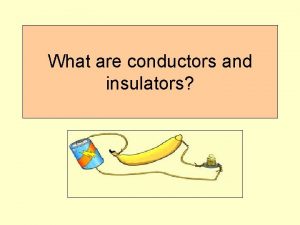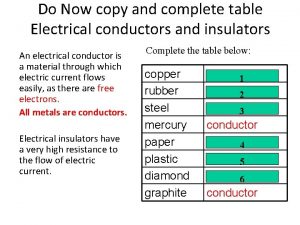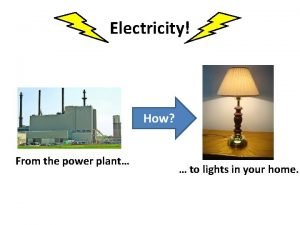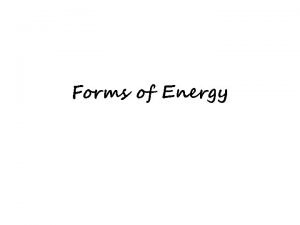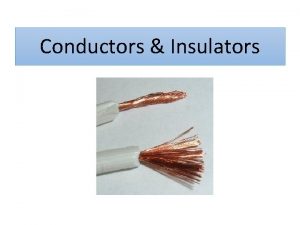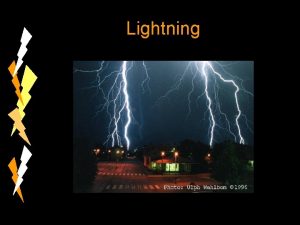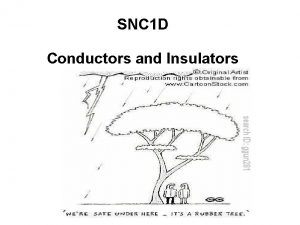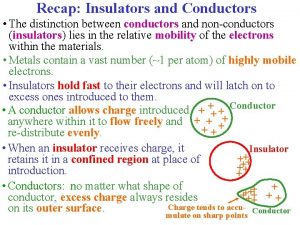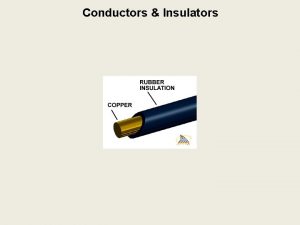INTRODUCTION Conductors mostly metals Insulators mostly nonmetal materials












- Slides: 12

INTRODUCTION • Conductors: mostly metals • Insulators: mostly nonmetal materials • Semiconductors: metalloids

CONDUCTOR It is a meterial which has a large number of free electrons so, the current can easily flow through it All meterials with resistivity less than 10^(-3) ohm. meter behave as conductor……. .

. . CONT For example silver, copper, aluminium, carbon and almost all metals

INSULATORS If the outer electrons of a meterial are very tightly bound to nucleus, it becomes very difficult to remove their orbits. Hence current no flow through such materials and they known as insulators……

……. CONT. All meterial with ressistivity above 10^(5) ohm. m E. g mica, porcelain, glass, rubber, oil , plastics, etc

SEMI-CONDUCTORS Materials like germanium and silicon are neither good conductor nor insulators. They are called semiconductor Normally their outer electrons are bound to the nucleus but the electron can be made free by some means…. .

……CONT. For example , adding some impurity to germanium or silicon can make the outer elecrons free by increasing the temperature also the electrons can be made free. Such material have resistivities between 10^(-3) and 10^(5) ohm. m

SEMICONDUCTORS • Metalloids: semiconducting elements – low electrical conductivity at room temperature – Electrical conductivity increases with temp. • Gap between valence and conduction band is intermediate in size

• Semiconducting elements form the basis of solid state electronic devices. Metalloids (such as silicon or germanium) are semiconducting elements whose electrical conductivity increases as temperature increases. A striking property of these elements is that their conductivities increase markedly when they are doped with small quantities of other elements

Fig. 1. Calculated energy levels in the diamond structure as a function of assumed atomic spacing at T = 0 o K. (From “Introduction to Semiconductor Physics”, Wiley, 1964)

Energy Band View of Semiconductors Fig. 1 shows the calculated allowed energy levels for electrons (vertical axis) versus distance betwee atoms (horizontal axis) for materials like silicon.

Thank you
 Give me example of conductor
Give me example of conductor What are conductor
What are conductor Parallel circuit characteristics
Parallel circuit characteristics Table of conductors and insulators
Table of conductors and insulators Bad conductor of electricity
Bad conductor of electricity Studyjams atmosphere
Studyjams atmosphere Conductors and insulators
Conductors and insulators Electrical energy
Electrical energy Metals on periodic table
Metals on periodic table Ferrous material
Ferrous material Metals vs nonmetals
Metals vs nonmetals Natural science matter and materials
Natural science matter and materials Natural science grade 7 term 3
Natural science grade 7 term 3

